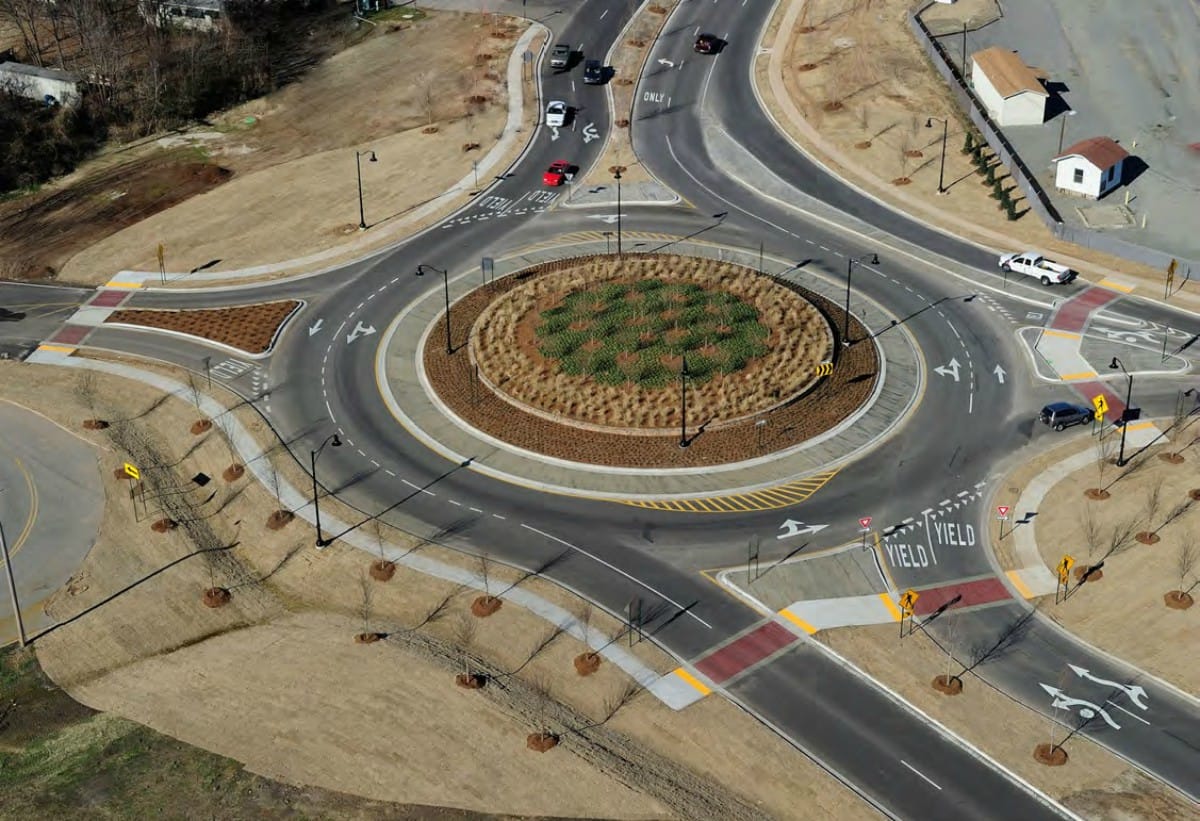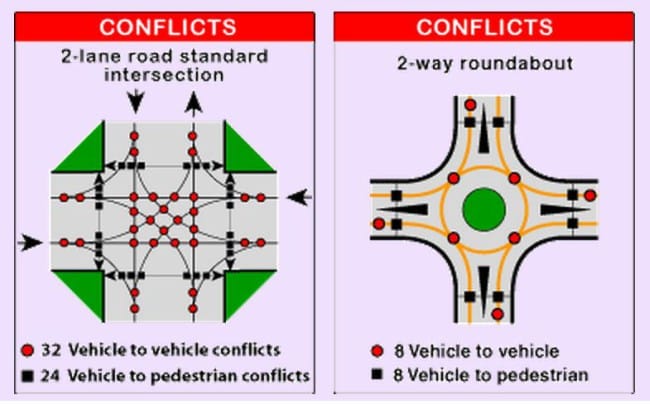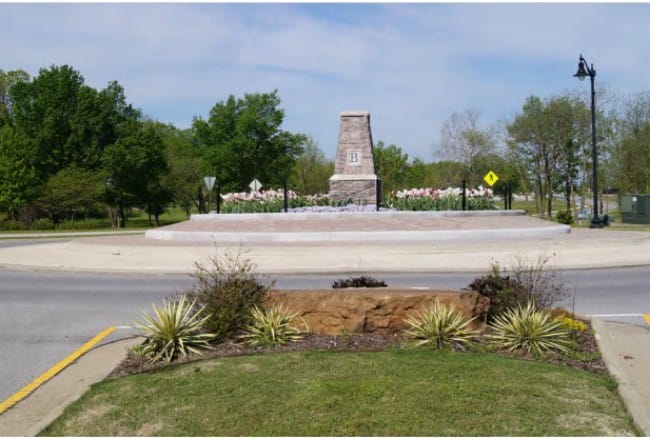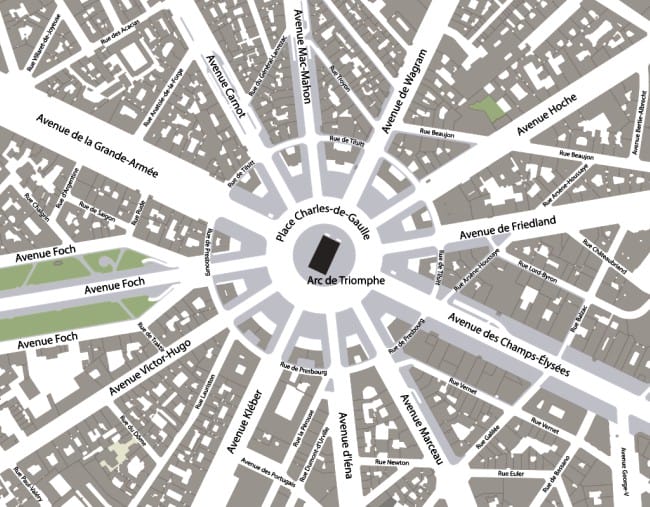

Uh oh...
It appears that you're using a severely outdated version of Safari on Windows. Many features won't work correctly, and functionality can't be guaranteed. Please try viewing this website in Edge, Mozilla, Chrome, or another modern browser. Sorry for any inconvenience this may have caused!
Read More about this safari issue.

You might have noticed a fairly new phenomenon cropping up across Arkansas. It may have you driving in circles. Roundabouts are becoming more common at intersections in many Arkansas cities.
On a trip to Paris, France, I remember entering the infamous L’Etoile roundabout that encircles the Arc de Triomphe. Twelve boulevards converge into one of the largest roundabouts in the world. Cars, trucks, and buses come to a standstill as they try to negotiate the circle while motorcycles and scooters zip around them.
In Swindon, England, the Magic Roundabout is anything but magical. Instead of a single roundabout, drivers must handle five mini roundabouts contained within a larger circle. The honor of the largest roundabout goes to Putrajaya, Malaysia. The roundabout is over two and a half miles long and encircles the Prime Minister’s office.
Fortunately, Arkansas isn’t about to build anything like these roundabouts, but why are they the next new thing in road construction design here?
The first reason, and the one I love the most, is safety. According to the Federal Highway Commission, roundabouts can reduce the amount of serious car crashes by 78-82% when compared to traditional stoplight intersections. Serious crashes are those that cause injury and death. Though roundabouts may cause their fair share of fender benders, they force drivers to slow down substantially on approach.

The Federal Highway Commission also cites the reduction in conflict points as another reason roundabouts are much safer. A traditional intersection has 32 points of conflict. These are the points where traffic merges together, separates, or crosses traffic. Compared to an intersection, a roundabout has only eight conflict points. Traffic can merge in one of four entries to the circle and exit at those same points.
The next reason many cities in Arkansas are adopting roundabouts is how well they help traffic flow across town. Instead of the frustration of stop and go traffic, especially during rush hour as drivers try to navigate crowded streets according to timed stoplights, roundabouts allow for traffic to continue with minimal stopping. Conway resident Jeanetta Darley recalls that she couldn’t wait for her city to get roundabouts after living in other cities that utilized them.
“It’s less than 10 miles from one side of town to the other,” Jeanetta says. “Before the roundabouts it could take 45 minutes to get across (town). Now it takes about half that time. You may be driving a little slower than before, but everything still moves and you get there in a shorter amount of time.”
At the turn of the twentieth century, France, Great Britain and the United States all began experimenting with roundabouts as major cities grew even larger and the automobile began to gain popularity. In the U.S., Columbus Circle in Manhattan opened in 1905 to help direct traffic flow. The L’Etoile roundabout in Paris was completed in 1907. Roundabouts didn’t become numerous, though, until Great Britain altered the design in the 1960s to give traffic inside the circle the right of way, eliminating high-speed entries into the roundabout and drastically reducing the number of accidents. Roundabouts began gaining popularity in the U.S. in the 1990s.
Kevin Beaumont designs and manages the installations of roundabouts for McClelland Consulting Engineers in Northwest Arkansas. Since Kevin is from Europe, he’s very familiar with roundabout usage and how roundabouts effect cities. One of his favorite things about their design, outside of safety, is the opportunity to provide beauty and a sense of place to a location that a typical stoplight intersection could not.

He also points out that roundabouts operate day and night, regardless of any interruptions by power outages. Finally, roundabouts are kinder on the environment. They don’t use electricity and cars don’t have to stop, which means they’re not producing as many fuel emissions as cars that come to a stop at intersections and continue running while waiting on the light to change.
So now that you know how much safer roundabouts are, how exactly do you navigate one? Kevin recommends doing some research if you feel uncertain about it. You can find videos online to help you, but he also recommends you get in your car and practice driving around them, just as you might have practiced for a driver’s test. In fact, it’s his hope that roundabouts will one day be included on a driving test.

Roundabouts might look intimidating on approach, but the rules are easy. First, slow down to 10-15 mph on approach. Traffic in a roundabout flows counter-clockwise, so you’ll always turn to your right as you enter.
Vehicles already within the roundabout have the right of way, so as you enter, if a vehicle is circling in your lane, yield to it. If you’re inside the circle, do not stop for entering traffic. You’ll only confuse other drivers.
If you intend to turn right, stay in the right (outside) lane. If you want to turn left or make a u-turn, take the left (inside) lane. Through traffic can usually take either lane. Try to get in the correct lane before entering the roundabout to avoid having to switch while inside the circle. The idea is to keep traffic moving, so simply follow your lane and exit right when you reach your desired street.

Roundabouts might look tricky at first, but once you grow accustomed to them, you might find you prefer them over stopping and waiting at traffic lights. Fayetteville alone already has seven roundabouts (including minis and retro-fitted streets) with plans to install six to eight more. A quick count in Conway puts the number even higher and Little Rock, Rogers, Bentonville, Springdale, and Russellville all have a growing number of roundabouts. Have you discovered a new roundabout where you live in Arkansas?
Photos of Arkansas roundabouts are from McClelland Consulting Engineers, Inc. and used with permission.
We do the work.
You check your email.
Sign up for our weekly e-news.
Get stories sent straight to your inbox!














 Leave a Reply
Leave a Reply
[…] Roundabout Arkansas – Only In Arkansas […]